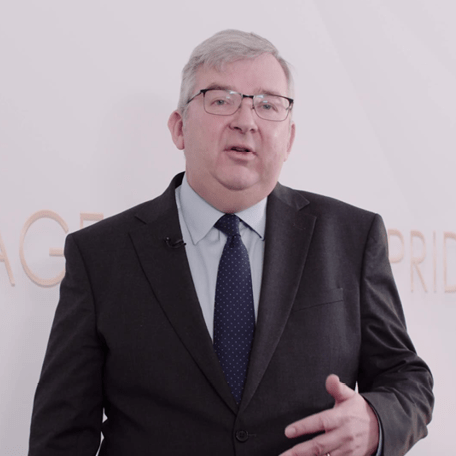As investors look to the rest of 2022 after a bruising January, we see three interlinked factors continuing to dominate sentiment, namely inflation, interest rates (and other policy tightening) and volatility.
With inflation at multi-decade highs in the UK and US, all eyes have been on central banks to see how far they might go to bring soaring prices under control, with concerns we may see more rate hikes than expected a large contributor to recent volatility.
The Bank of England was first to act, with a rise from 0.1% to 0.25% in December and another 0.25% increase at the start of February. As expected, the US Federal Reserve refrained from any rate activity in January, albeit signalling an end to its asset purchasing, but the focus was on rises to come and a first step on the hiking path is all but confirmed for March. With US inflation at 7% and the jobless rate continuing to fall, concerns are rising about a possible 50 basis point increase in March and markets are pricing in a 94% probability of five 0.25% moves in 2022.
Needless to say, the impact on markets so far – on top of growing panic around the situation between Russia and the Ukraine – has been to weaken risk assets and continue to drive the growth to value rotation. Feasibly, we could see volatility continue until the March Fed meeting provides clarity on the volume and quantum of hikes and, in this environment, longer-duration growth stocks face a torrid few months.
Higher interest rates, theoretically, lead to higher discounting of future profits, so growth businesses with higher future profits (longer duration) are likely to see their valuations continuing to fall. We have also had a few tech darlings, including Netflix and Meta (Facebook), hit hard on lower earnings guidance and, more generally, there are suggestions that lockdowns led to an exceptional pull forward of demand in certain sectors and this will fade as we return to ‘normal’.
As always, we stress that volatility creates opportunities for our MA funds, and the underlying managers we hold, and recent selling has pulled many growth names down to their best prices for years. Meanwhile, despite the rotation, many value stocks continue to be very cheap; the UK, for example, remains a contrarian play despite a solid 2021 and holding up well so far this year as more of an ‘old economy’ market.
From a broader perspective, we try to look through short-term noise and identify investments we expect to outperform over the medium to long term. The past couple of years have provided an extraordinary environment for investors to navigate; at times such as these, many end up extrapolating short-term trends into something more substantial and this will often generate plenty of heat but little light. Over 2020 and much of 2021, many of the businesses that benefitted from the trend for people to stay at home enjoyed exceptional growth; some of that was justified by greater revenue, profit and prospects but some was probably overdone. When it comes to areas such as the US, we remain firmly in the overdone camp and have tilted our allocations away from expensive growth areas to less loved parts of the market, which represent better value.
From an equity perspective, that means a long-term underweight to the US and favouring markets such as the UK, Europe and Japan. Within bonds, meanwhile, we appreciate the direction of yields will be upward over time (as interest rates climb) but, as ever, the path will not be linear and we maintain exposure to this asset class for its diversification to equities, some level of inflation protection and increasing income. For now, we remain underweight duration in our fixed income allocation as central banks prevaricate over the timing and extent of rate rises and tapering.
Looking forward, we would say that total returns from many equity markets, particularly the US, are likely to be lower this year after such a strong run post the initial Covid-inspired fall in March 2020. With the S&P 500 up close to 27% last year, history suggests that after a gain of at least 20% by the index, returns are comparatively muted over the following 12 months, with an average rise of around 8%. The extraordinarily narrow nature of recent US performance is also reinforced by figures that show just five companies (Apple, Microsoft, Amazon, Facebook, and Alphabet) contributed a third of overall S&P 500 returns over five years to end 2021. Debate over whether tech superiority can continue will rumble on but we suggest a situation where 1% of companies are producing 33% of performance seems unsustainable, particularly with a rising rate environment more challenging for longer-duration sectors.
For the foreseeable future, the narrative around markets will be all about rates: if they rise quicker and more than expected, (which is currently worrying markets), it could be tough for equities; if slower, that should be a healthier backdrop, especially for international and value stocks. But to reiterate, while we agree that large parts of the US market are prohibitively expensive, with many 'stay at home' companies valued as if the world is still at home, not everything is priced to perfection.
In a reflationary environment, we expect the rest of the world to outperform the US equity market, value stocks to outperform growth and small caps to outperform large. These outperformances will not all come at once, however, so we retain prudent diversification across the MA funds rather than making a significant gamble that one particular thesis pays off.










